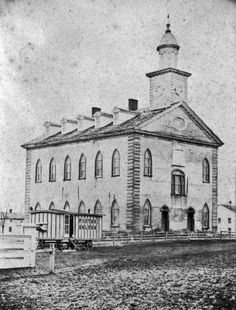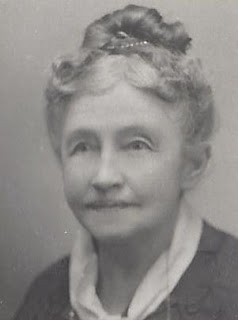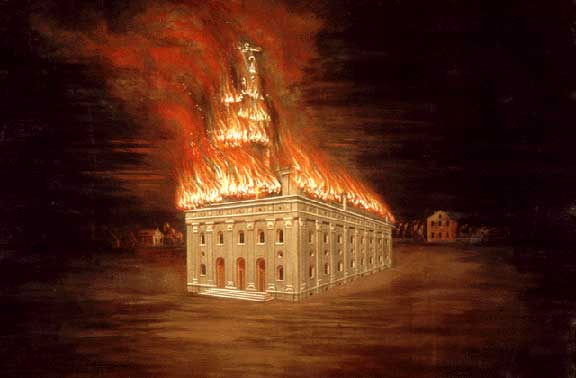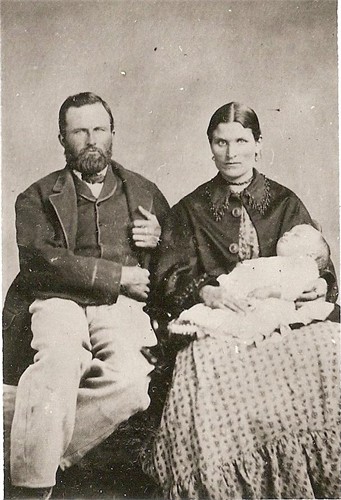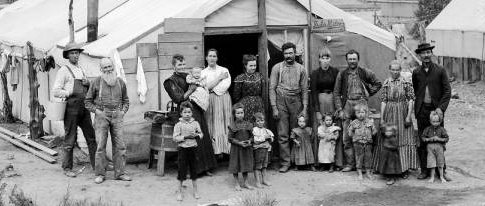Introducing the main characters.
Adding to the confusion, it should be noted that a frequent claim as to Benoni's parentage has been that of John Patten and Abigail Makepeace. This is not true. While Benoni's biological father is named John Patten (probably not the same John Patten that married Abigail Makepeace), his biological mother is Margaret Holmes with Benoni being raised by his step-father William Wyman (Margaret Holmes' husband).
Margaret Holmes and John Patten were never husband and wife, but obviously were in some sort of relationship, short-lived as it may have been. The relationship was mutual and acknowledged by Patten, we can see on the fifth of April 1757, Margaret brought suite against John Patten for, as it was put, "getting her with child". It is important to note, John Patten didnt put up a fight over paternity.
Benoni was born January 27, 1757 in Bedford, New Hampshire. He also lived in Putney, Vermont.
We see that Matthew Patten (no relation) was a well known and respected Justice of the Peace in Bedford, New Hampshire. On the fifth of April 1757 (over four months after Benoni was born) Justice Patten recorded in his diary, "was at James Walkers on John Pattens being apprehended by Margret Holms for his Getting her with child for which he agreed with her for 300 [pounds] old Tenor and he pd Charges".
| excerpt from Justice Matthew Patten's diary from 1757, page 35 |
Margaret's parents were also living in Bedford, New Hampshire at the time and about this time sued some neighbors for saying Margaret's mother had procured abortion causing medication from a shady woman in the area to be used on her daughter to prevent Benoni’s live birth. (of course this was not true).
So our single mother, Margaret Holmes and her little son, Benoni probably living with her parents are found in New Hampshire's Bedford area and by 1759, Margaret is married to William Wyman. I love this William Wyman who married a young single mother and her little son who had a bit of a rough start. This name Wyman is note worthy in this story, as one of Benoni's sons was named David Wyman Patten, an important figure in early Church history. William Wyman must have left a lasting impression on Benoni to name a child for him.
William Wyman and Margaret would go on to have at least seven children of their own, all half-siblings to Benoni.
The next chapter of Benoni's life would be that of service to his country. His service in the Revolutionary war was noted for his imprisonment on a British ship and for the length of his service.
Note: Benoni’s enlistment was less than two weeks after the first shots were fired at Lexington. He very possibly participated in the Battle of Bunker Hill on June 17, or at least could hear it and saw the movements of the companies.
Benoni wasn't the only one in the Wyman household to serve, William Wyman with his sons, Henry, William, stepson Benoni Patten all served in the Revolutionary War. Margaret Wyman with her younger, small sons were left in the wilderness while the others served the Government and many tales are told of their hardships, and of the bravery of this woman of Scotch-Irish descent, as she with her small help attempted the making of maple sugar, with only the rudest utensils, and managed to keep the fires burning.
The following is Benoni's own account of his military service in the Revolutionary War. Original spelling retained. Items above the line are enclosed in carats <>. Editorial emendations are in brackets [].
"<May or June> in the Year 1775 I inlisted under Sergt John Me Pum for that campaign My colonels name Johnan<an> Brewer my Capt name Isaac Grey, first Lieut Thomas Millington his Brother was a Subaltern Joseph Colson was Drum Mager of our Regiment our Lieuts name was buckmaster he and the Colonel was wounded at Bunker Hill Battle 1775 Robert Conkey was our Fiefer <[unintelligible] names> Nathanul Ellot John Crosset Isaac Grey Alexander Conkey I served in this corps until I inlisted under Lieut Thomas Millington in the month of Dec in the same year for the year 1776 <Now look to the [unintelligible] page A.E> ———June or July in the year 1777. I Entered a board the Massachusetts Brig Freedom Capt John Cluston commander Lieut Adams & Lieut Abbott [unintelligible] on [unintelligible] month of Sept [unintelligible] we sailed I was made a prisnor by the British Carried to New York Harbor tarried there until Dec Sent round Long Island to Rhode Island Harbour put a board of another prison Ship held there until twelvth of March the set ashore at Bristol ferry in Rhode Island Carried to the Hospital in providence and said [sad] state tarried there until April 12. Got a Discharge and [unintelligible] Holm
[Page Two]In the month of Dec 1775 I inlisted with Lieut Thomas Willington in the Service of my Country for the year 1776. The place of my inslistment was Prospect Hill in the year State of Massachusetts My Colonl name was Asa Whitcome my Capt name I think was Daniel Whiting Willington Brother was another of our Lieut our orderly Sergent name was Benjamin. Phillips was one of our Corporals. Robert Dillon was another Whitney was another the given names of Phillips and Whitney are forgotten
Privates Lemuel Dewy : Antony Manuel Manuel Swasy, a private of the name of Lown Thomas Ferrel There was one Luce I think he was a Sergent our Drummers name Johnathan Willington
We marched from Prospect Hill to Roxbury we tarried there untill after the British Evacuation of Boston we then went into the Town and tarried there until August we then marched to Ticonderoga as Soon as I landed I was complimented by Lieut Riggs will you go down the Lake and fight the British by the liberty of the Capt I went and on oct 11th we had an Engagement we [unintelligible] Back to Ticondaroga and in two days went to the Hospital at Fort George at the head of Lake George I was verry sick and in december came Back to Ticondaroga and Found my Regiment I served untill the first day of January 1777 I then came home"
According to a portion of The History of Butler County, Benoni Patten was taken prisoner during the battle of New York and was confined several months at a British prison ship in New York harbor.
Further, this history reveals some of the hardships such prisoners endured.
“One day, after suffering from hunger for a long time, a large iron kettle, with peas boiled into a soup, was brought to the prisoners, with nothing to eat it with - without spoons, ladles or other utensils, and each had to help himself with such as he could find in that loathsome prison-ship,” it states in the History of Butler County.
So, how did Benoni Patten seize this rare offer of nourishment?
“He, in his hunger after food, took from his foot an old shoe and dipped it into the kettle of pea soup, and drank out of the heel of the shoe.”
Of his capture by the British we learn that the British Prime Minister, Lord Germain, took the position that since the Americans were rebels, they did not qualify to be treated as regular prisoners of war. It is said Benoni would often relate the hardships those prisoners had to undergo while thus confined, half fed, poorly clad, and abused by those in charge.
The British used up city jail space in New York and brought in a number of unseaworthy hulks which they anchored in Wallabout Bay (now Brooklyn Navy Yard), which they converted to prison ships. Benoni was moved to a prison ship in Rhode Island Harbor about three months before the most notorious prison ship of all, the Jersey was brought in to Wallabout Bay.
Benoni endured the infamous harsh winter at Valley Forge, at Trenton. He also experienced the satisfaction of seeing Cornwallis’ surrender at Yorktown.
After doing his part and having sacrificed much, he was needing rest and recovery. It would be a few more years until Benoni would meet Edith Cole. They were married 14 September 1779 in Westmoreland, Cheshire, New Hampshire. In Patten style and tradition, they would go on to have thirteen children. Edith, Polly, Margaret, Sally 1, John (our ancestor), Benoni Jr 1, Archibald, Benoni Jr 2, Sally 2, Elizabeth, David Wyman, Sophia, Ira.
It is recorded that the Benoni Patten family lived with Edith's father, Jonathan Cole in Westmoreland, New Hampshire for a number of years and is found in the 1790 census as living there.
Of the thirteen children of Benoni and Edith, six accepted the true gospel of Jesus Christ including Dr John Patten (our ancestor), Archibald Patten, Elizabeth or Betsey Patten Parrish, David Wyman Patten, Ira Patten, Polly Patten, even the mother Edith Cole Patten were all baptized. They were a close family, they were familiar with the teachings of the Holy Bible, so when the truth came, they were ready and accepted it.
Excerpt from David W. Patten - baptism of family members by Brigham Young.
"May 20, 1833, brother Brigham Young came to Theresa, Indian River Falls, where I had been bearing testimony to my relatives; and after preaching several discourses, he baptized my brothers Archibald and Ira Patten, and brothers-in-law, Warren Parrish, Mr Cheeseman and my mother and my sister, Polly."
Just a year prior to the family baptisms, in August 13, 1832, Benoni died at Orleans, Jefferson County, New York, at the home of his son Archibald Patten. According to Edith’s pension application they had lived in Orleans for six months prior to Benoni’s death. Benoni's widow did receive a pension for his service after his death.
 |
| Signature of Benoni Patten on his statement of war service. |











